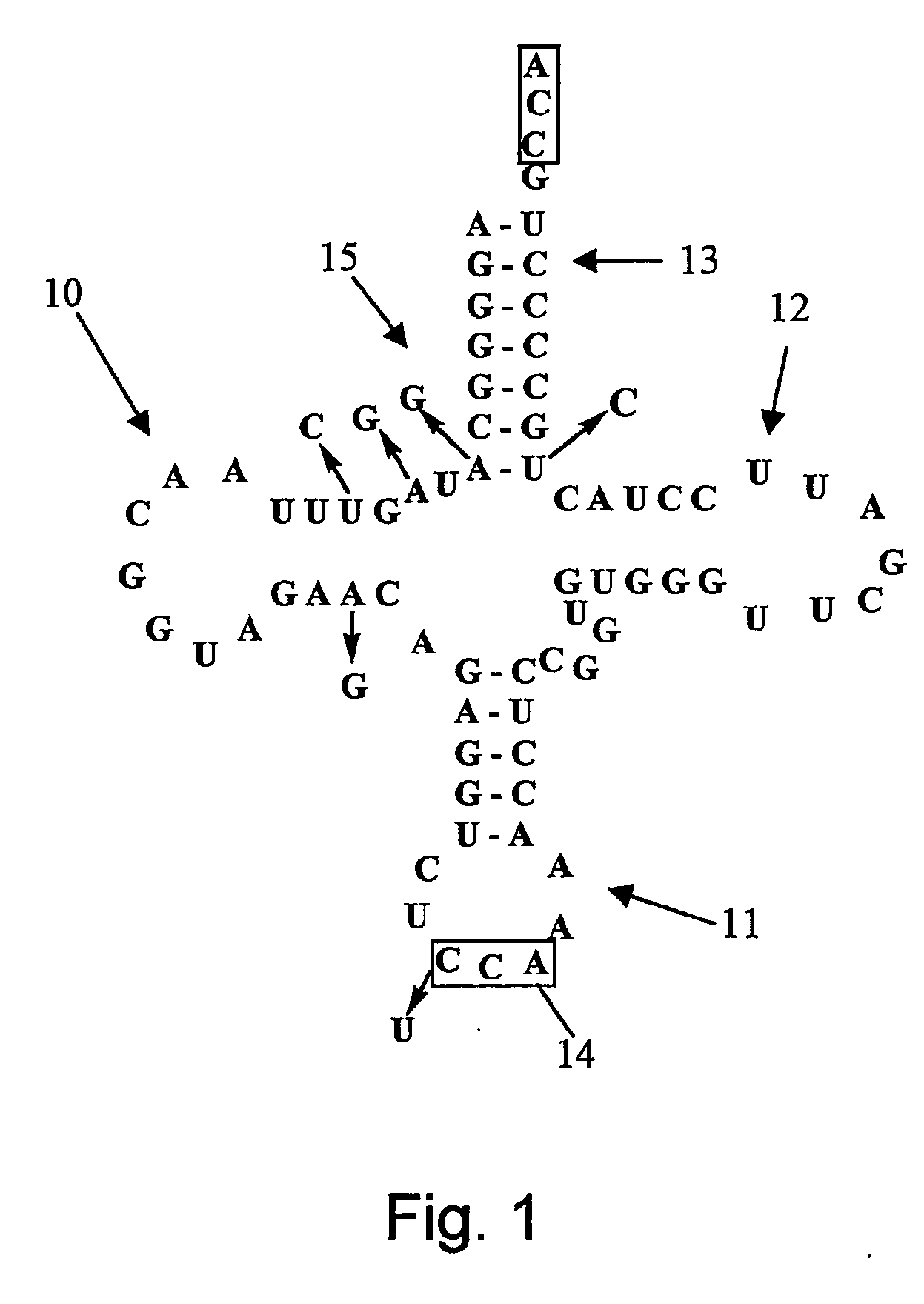Selective incorporation of 5-hydroxytryptophan into proteins in mammalian cells
a technology of protein incorporation and mammalian cells, applied in the field of protein expression, can solve the problems of inability to easily scale up, poor synthesis of solid-phase peptides, and often non-specific post translational modifications, and achieve the effects of reducing efficiency, reducing efficiency, and reducing or even undetectable efficiency
- Summary
- Abstract
- Description
- Claims
- Application Information
AI Technical Summary
Benefits of technology
Problems solved by technology
Method used
Image
Examples
examples
[0156] The following examples are offered to illustrate, but not to limit the claimed invention. It is understood that the examples and embodiments described herein are for illustrative purposes only and that various modifications or changes in light thereof will be suggested to persons skilled in the art and are to be included within the spirit and purview of this application and scope of the appended claims.
Example—Orthogonal Incorporation of 5-HTPP into a Peptide
[0157] An orthogonal tryptophanyl-tRNA synthetase (O-TrpRS)— opal suppressor (mu tRNAUCATrp) Pair was generated for use in mammalian cells. The anticodon loop of a Bacillus subtilis tRNATrp was mutated to UCA, three positions in the D-arm were mutated to generate an internal promoter sequence, and the mutRNA ucA gene was inserted between the 5′ and 3′ flanking sequences of the tRNATrpl gene from Arabidopsis to enhance its expression in mammalian cells. In vitro aminoacylation assays and in vivo opal suppression assays s...
PUM
| Property | Measurement | Unit |
|---|---|---|
| molecular weight | aaaaa | aaaaa |
| molecular weight | aaaaa | aaaaa |
| electrical potential | aaaaa | aaaaa |
Abstract
Description
Claims
Application Information
 Login to View More
Login to View More - R&D
- Intellectual Property
- Life Sciences
- Materials
- Tech Scout
- Unparalleled Data Quality
- Higher Quality Content
- 60% Fewer Hallucinations
Browse by: Latest US Patents, China's latest patents, Technical Efficacy Thesaurus, Application Domain, Technology Topic, Popular Technical Reports.
© 2025 PatSnap. All rights reserved.Legal|Privacy policy|Modern Slavery Act Transparency Statement|Sitemap|About US| Contact US: help@patsnap.com



